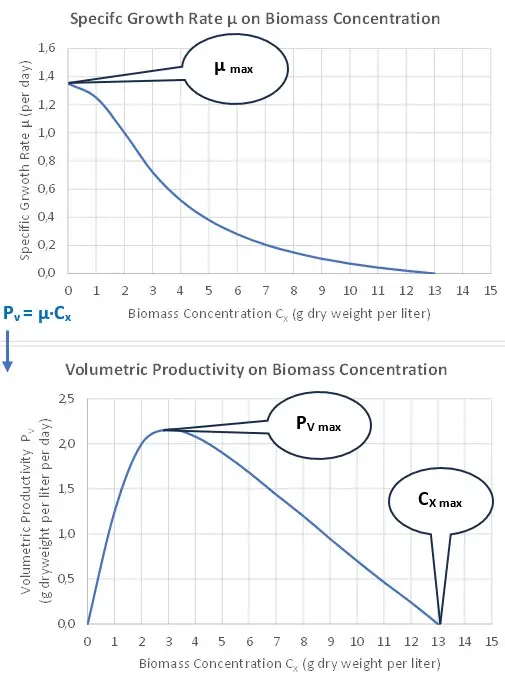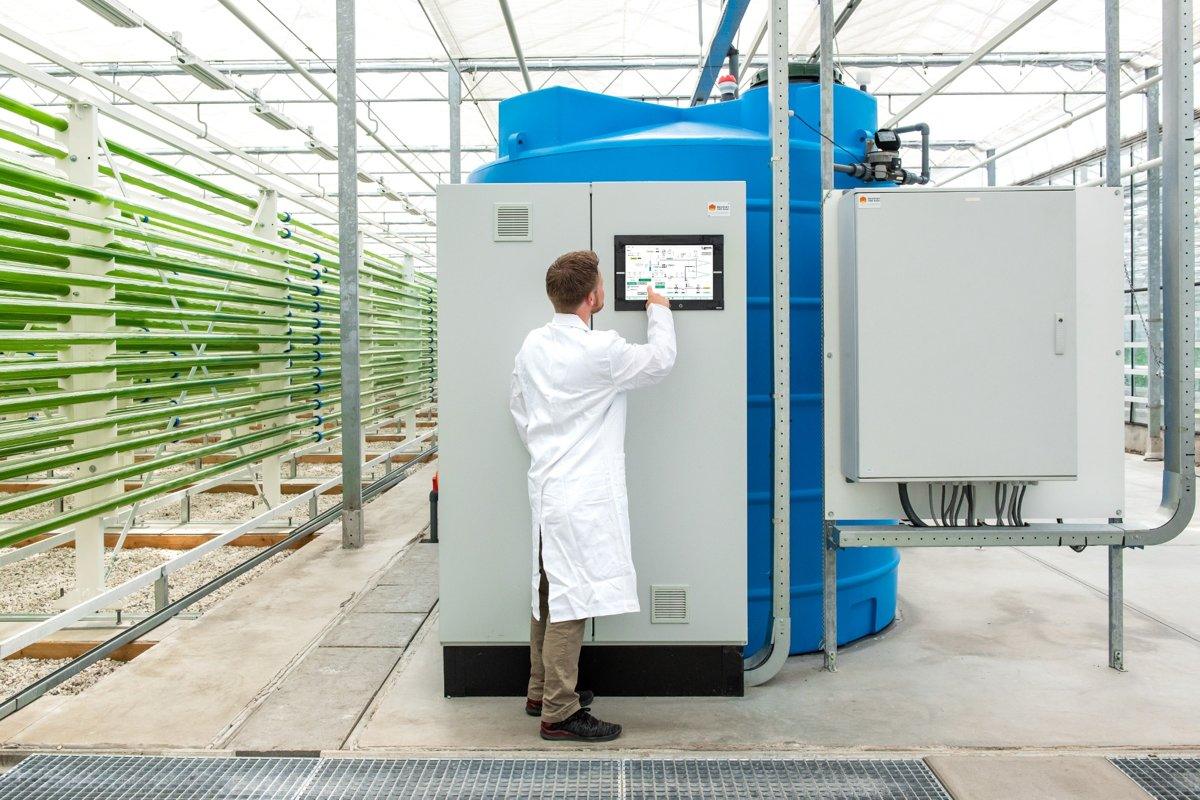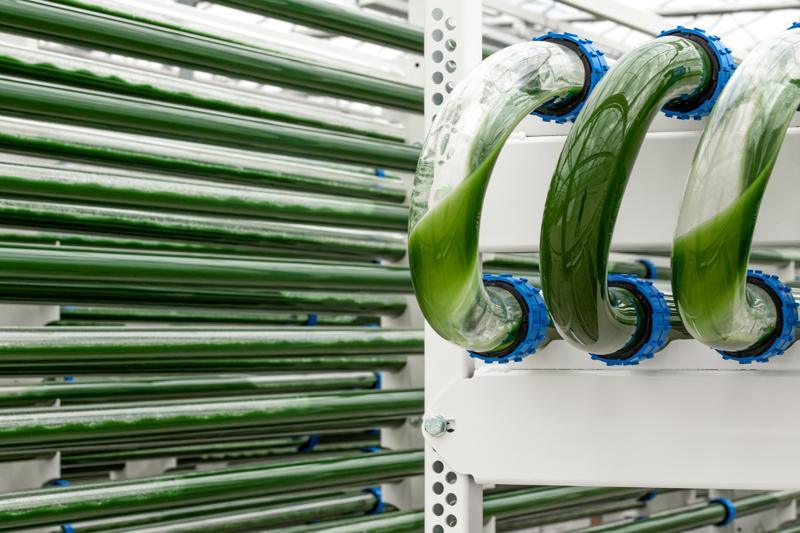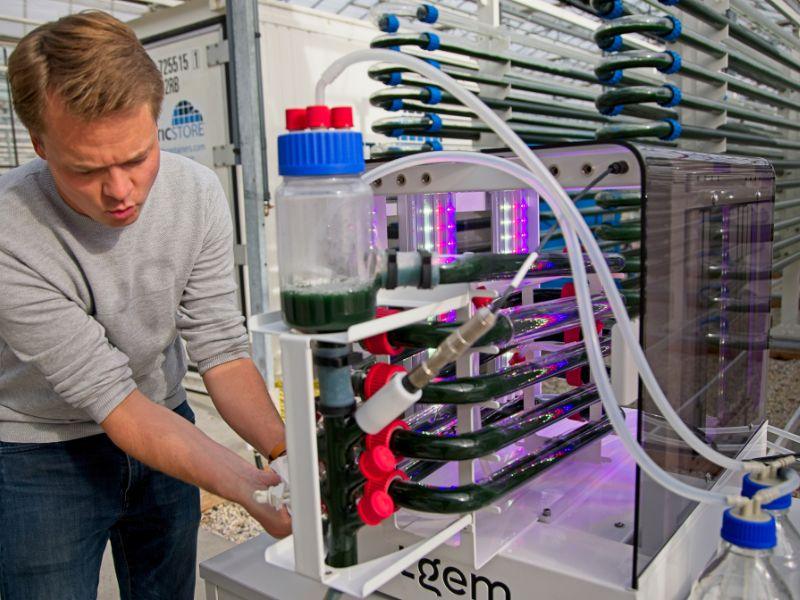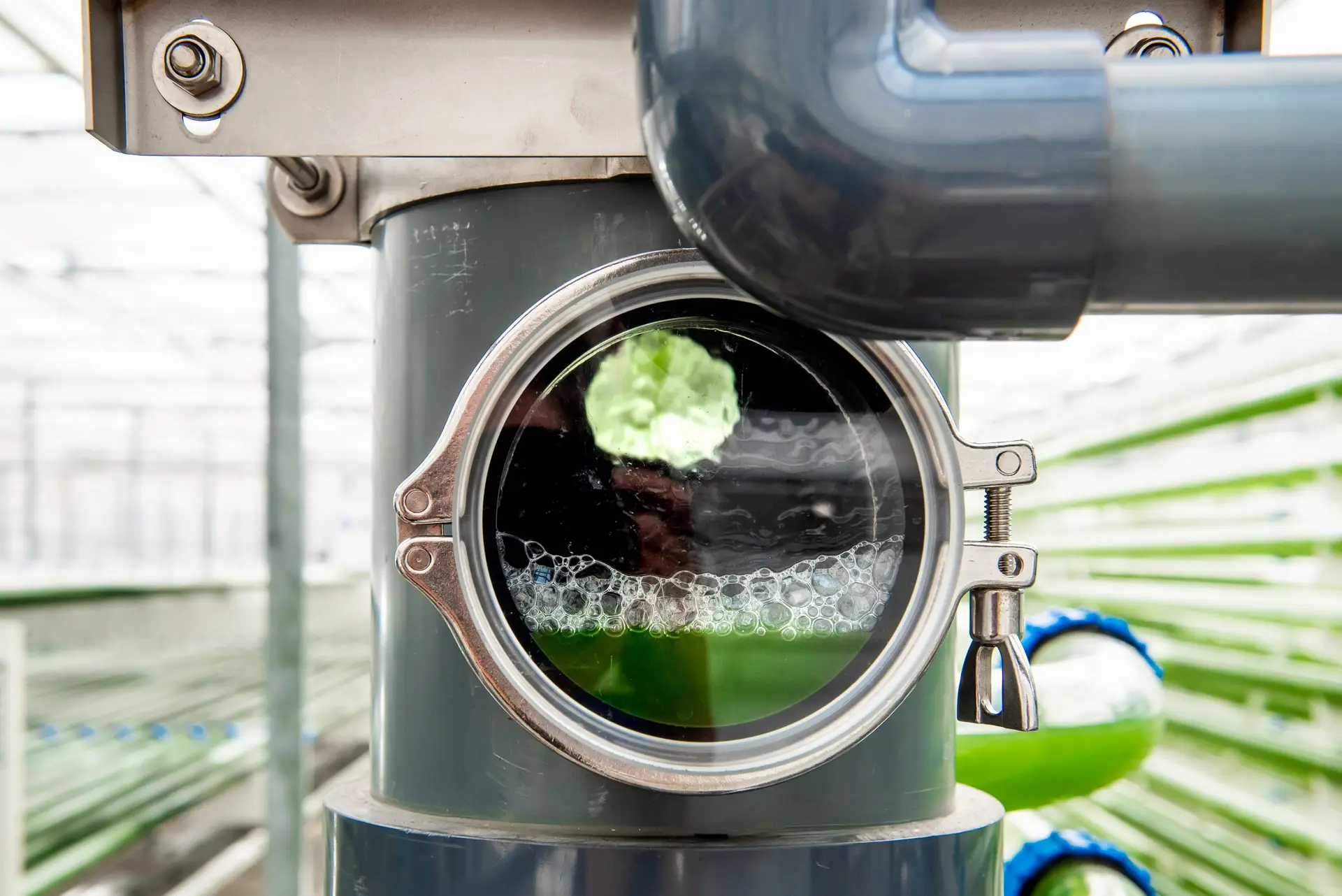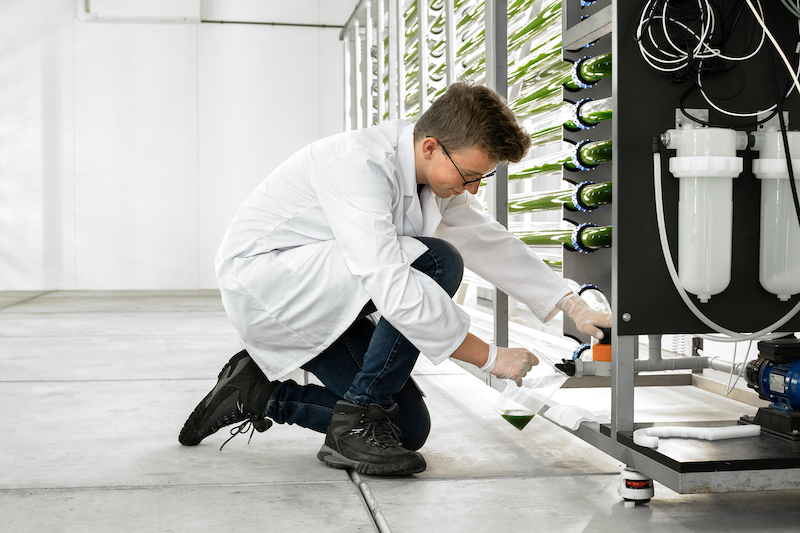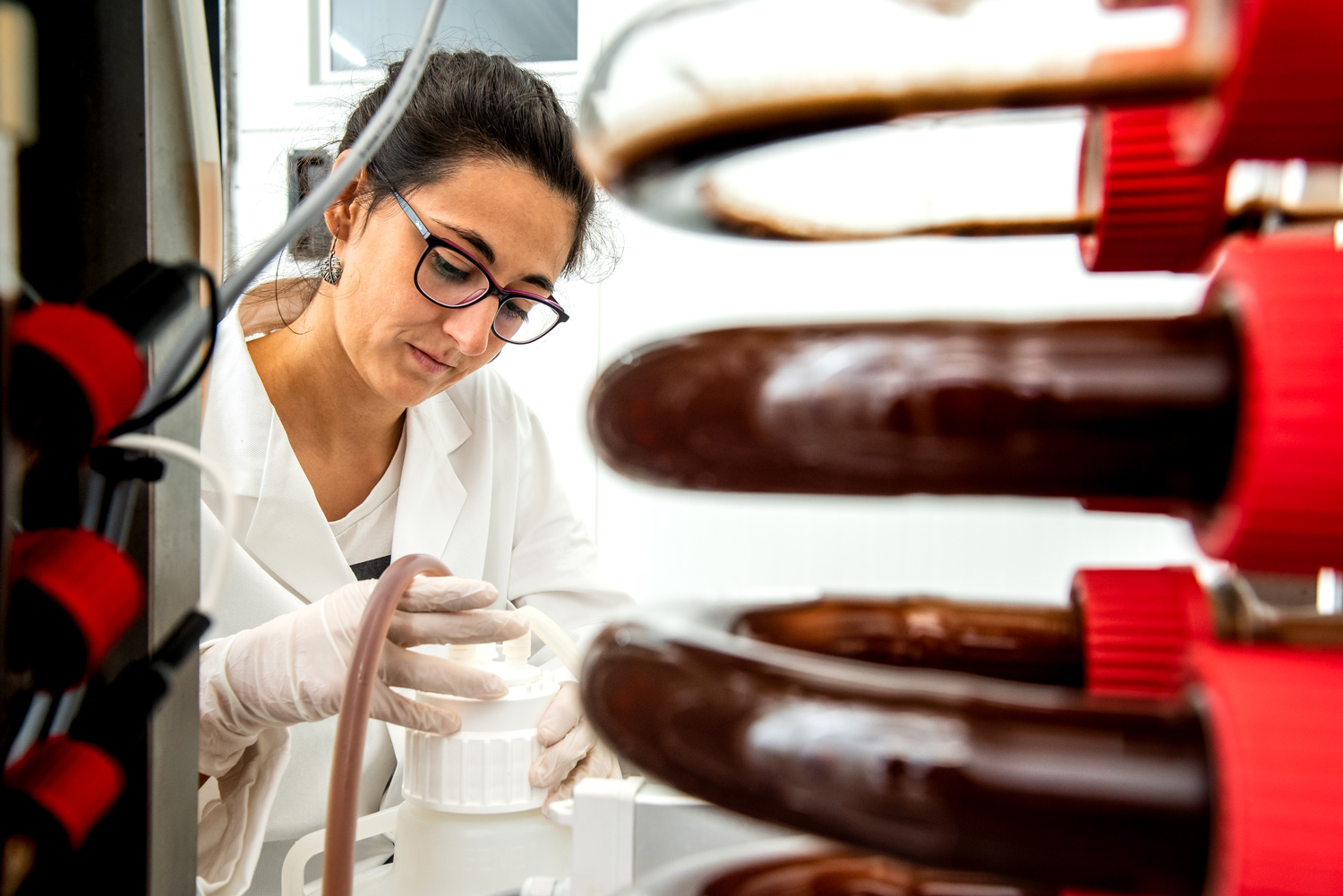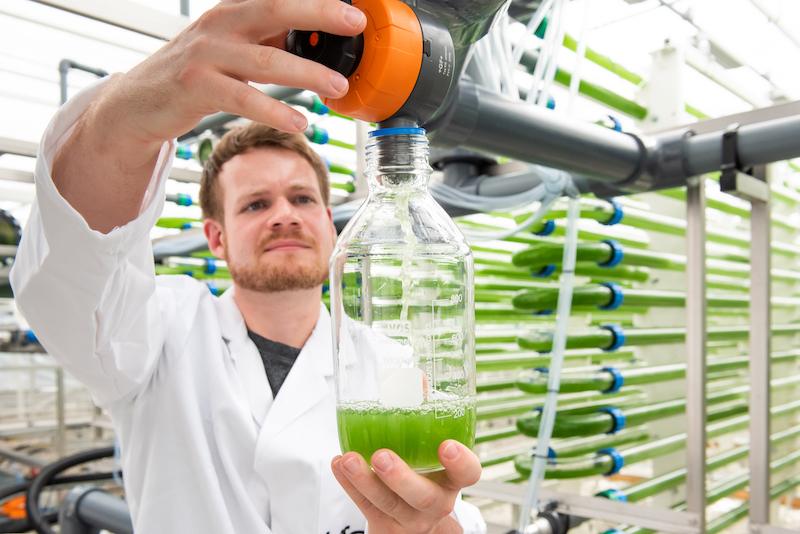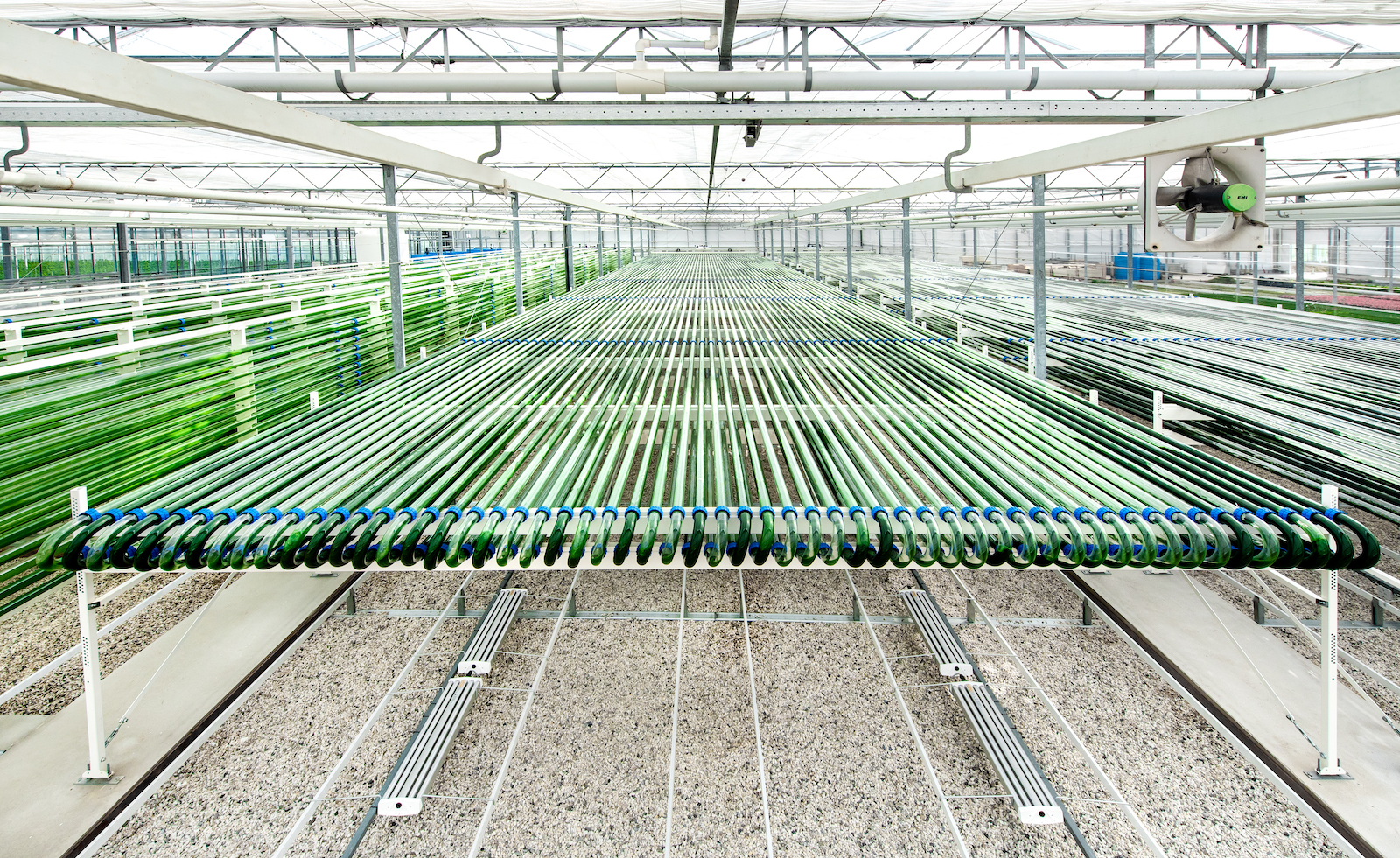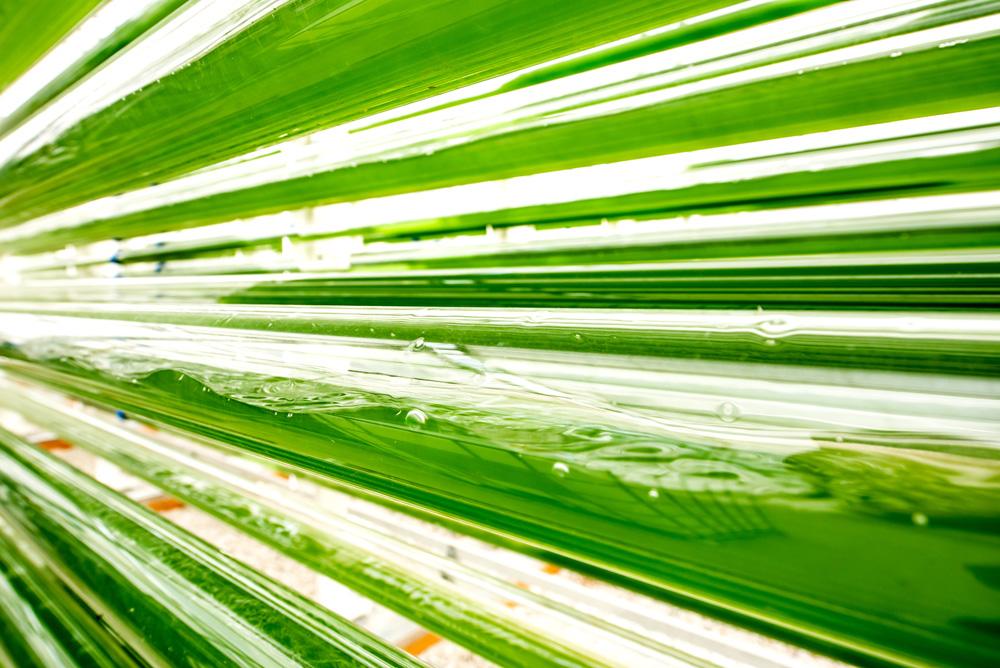
Relationship Between Specific Growth Rate, Volumetric Productivity, and Biomass Concentration in Photobioreactors
1. Introduction
A photobioreactor is a system that provides a controlled environment for the growth of photosynthetic organisms like microalgae. The performance of a photobioreactor is often characterized by parameters such as specific growth rate, volumetric productivity, and biomass concentration. Understanding the relationship between these parameters is essential for optimizing microalgae production.
2. Specific Growth Rate (µ)
The specific growth rate (often denoted as “µ”) is defined as the rate at which microalgae population grows per unit of time, relative to its current size. Mathematically, this can be represented as:
μ.CX = dCX/dt, where CX is the biomass concentration and dCX/dt is the rate of change of biomass concentration with time.
3. Biomass Concentration (Cx)
Biomass concentration refers to the amount of microalgae biomass present in the reactor per unit of volume, usually measured in gram dry weight per liter culture (g/L). It represents the density of microalgal cells in the photobioreactor. An initial biomass concentration, often denoted Cx0, is required to start the culture, and the biomass concentration increases over time as the microalgae grow. Other ways to describe the density of microalgal cells is the cell count (number of cells per milliliter) or optical density (e.g. OD650).
4. Volumetric Productivity (Pv)
Volumetric productivity is a measure of how much biomass the photobioreactor produces in a given volume over time. It is given by: Pv=μ⋅CX This equation shows that the volumetric productivity is directly proportional to both the specific growth rate µ and the biomass concentration CX.
5. Relationship
Specific Growth Rate and Biomass Concentration: The specific growth rate generally decreases as biomass concentration increases. This is because, as the concentration rises, factors like light limitation or nutrient depletion can reduce the relative rate at which microalgae cells can reproduce.
Specific Growth Rate and Volumetric Productivity: An increase in specific growth rate will directly lead to an increase in volumetric productivity, as they are directly proportional according to the formula Pv=μ⋅CX.
Biomass Concentration and Volumetric Productivity: An increase in biomass concentration initially leads to an increase in volumetric productivity. However, since specific growth rate µ decreases with increasing biomass concentrations Volumetric Productivity will reach a maximum at a certain biomass density and will decrease at higher densities, till the maximum concentration is reached at a point where the dissimilation of the biomass equals the assimilation.
6. Conclusion
For optimal production of microalgae in a photobioreactor, it’s crucial to understand the relationships between specific growth rate, biomass concentration, and volumetric productivity. By quantifying these relationships experimentally for a given microalgae species, reactor design, and operating conditions can be determined. A practical example of this approach is represented in the table and figure below.
| Biomass Concentration | Specific Growth Rate | Volumetric Productivity |
| (gram dry weight per liter) | (per day) | (g dryweight per liter per day) |
| CX | µ | Pv = µ·Cx |
| (g.L-1) | (d-1) | (g.L-1.d-1) |
| 0 | 1.35 | 0.00 |
| 1 | 1.25 | 1.25 |
| 2 | 1.01 | 2.02 |
| 3 | 0.72 | 2,16 |
| 4 | 0.52 | 2.08 |
| 5 | 0.38 | 1.90 |
| 10 | 0.07 | 0.70 |
| 13 | 0.00 | 0.00 |
